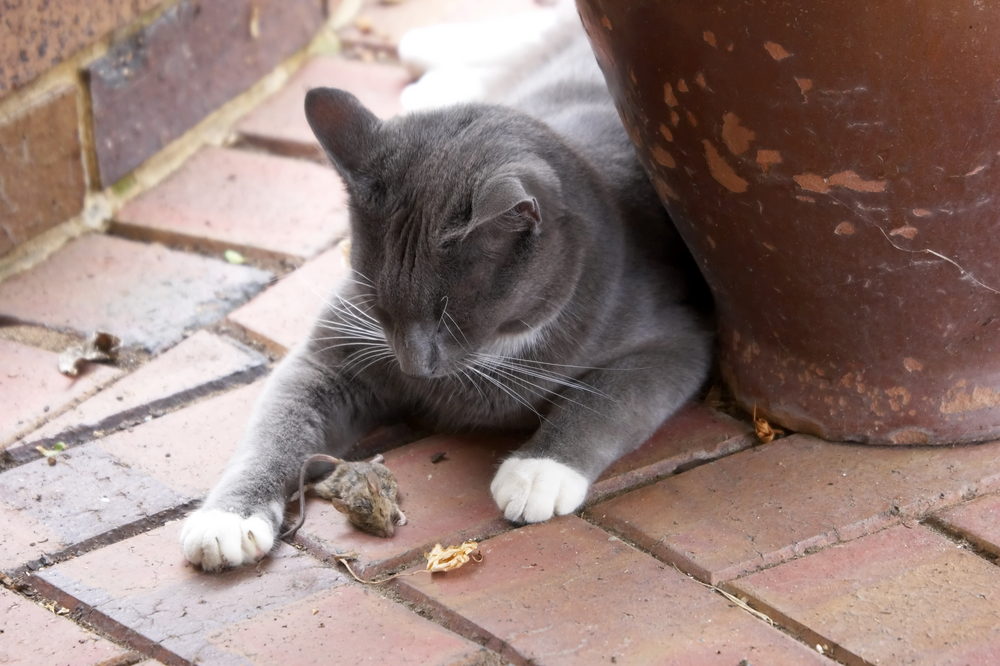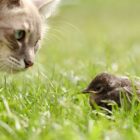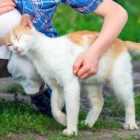Why does my cat bring me dead animals?

The cat’s behavior of bringing dead animals or prey to their human owners is rooted in their hunting instincts, which are deeply ingrained in their DNA. To understand why your cat brings you dead animals, it’s essential to understand the evolution of domestic cats and their predatory nature.
The Need to Hunt
Domestic cats (Felis catus) are descendants of the African wildcat (Felis silvestris lybica), which was domesticated around 9,000 years ago in the Near East. These wildcats were solitary hunters, and their hunting instincts were essential for their survival. They lived in a variety of habitats, including forests, grasslands, and deserts, and they hunted a wide range of prey, including small mammals, birds, reptiles, and insects.
Over thousands of years of domestication, these instincts haven’t disappeared; they’ve only been modified. Domestic cats still retain many of the same hunting behaviors as their wild ancestors, including stalking, pouncing, and killing their prey. These behaviors are hardwired into their biology and are not something they can simply switch off.
As a result, domestic cats often exhibit hunting behaviors, such as chasing and pouncing on toys or small objects, even if they’re well-fed and have no need to hunt for food.
Everything (Of The Correct Size) Is A Prey
In the wild, cats are solitary hunters, and they use their hunting skills to catch and kill prey to survive. They have sharp claws and teeth, which they use to catch and kill their prey, and excellent night vision, which allows them to hunt in low light conditions. They also have keen senses of sight, hearing, and smell, which they use to locate and track their prey.
Cats are opportunistic hunters, and they will hunt a wide range of prey, including small mammals, birds, reptiles, and insects. They are also skilled stalkers, using cover and camouflage to remain unseen until they are close enough to pounce on their prey.
Play is essential for cats, as it helps them develop and maintain their hunting skills. Kittens, in particular, engage in playful behaviors such as pouncing, stalking, and wrestling, which mimic the behaviors they’ll use when hunting prey as adults. Play also provides them with mental stimulation and physical exercise, which are important for their overall health and well-being.
Some cats don’t consume their prey, and sometimes they don’t even kill it. Spayed female cats are the most likely to bring gory gifts to their owners. But they have their reasons.
The “This Is How You Hunt, Human!” Hypothesis
In the wild, cat mothers play a crucial role in their young’s education, especially when it comes to hunting and feeding. They teach their kittens essential skills, such as stalking, pouncing, and killing prey, through observation and practical training. This education is vital for the survival of the kittens, as it ensures they can provide for themselves once they reach adulthood.
Domestic cats, despite their comfortable lives in our homes, still possess these natural instincts and behaviors. However, spaying and neutering have become common practices in the modern age, significantly reducing the number of kittens born to domestic cats. As a result, many female cats have no young to whom they can pass on their hunting wisdom.
In a natural setting, a cat mother would bring back dead or injured prey to her den, allowing her kittens to practice their hunting skills. This behavior serves as a practical lesson, teaching the kittens how to kill, dissect, and consume their prey. However, in a domestic setting, this behavior may seem odd or even disturbing to us humans.
The “I’ll Eat It Later” Hypothesis
Cats are known to kill and consume their prey later. This behavior is often observed in domestic cats and is a part of their natural hunting instincts. In the wild, cats are solitary hunters and may need to hunt and kill their prey in order to survive.
After capturing their prey, they may consume part of it immediately and then return to it later to finish it off. This behavior allows cats to conserve energy and resources, as they can eat a portion of their prey and then save the rest for later. Additionally, by returning to their kill site, cats can reduce the risk of losing their prey to scavengers or other predators.
When a cat has successfully caught her prey, she may engage in various behaviors. She might play with the animal, consume the entire carcass, or eat only part of it. However, sometimes she might lose interest and leave the body where she was when she stopped playing or eating, which could result in the owner discovering unpleasant surprises.
Some domestic cats have a tendency to store their kills in a specific location within the house, often their favorite spot. Additionally, some cats may vocalize while holding the dead prey in their mouth, perhaps as a way to communicate with their owner or to signal their accomplishment. This behavior could also be a way for the cat to show off their hunting prowess.










